We arrived in Quito (elevation 9,350 feet) on August 8th, a day before our tour was to begin. This gave us an opportunity, although short, to explore Quito on the 9th. On the morning of the 9th we taxied from the Hotel Quito to the Teleferiqo Gondola, for a cool (literally and figuratively) ride up the lower slopes of the still active Pichincha Volcano (peak elevation, 15,696 feet, last eruption 2002). The City of Quito was built in the 16th and 17th centuries on the site of an old Inca city, and the city and its environs wraps around the eastern slopes of Pichincha. With its current 1.6 million inhabitants, in a narrow valley, the city spreads out for miles. We enjoyed the downward view to the city and its buildings and the upward view to Pichincha from the top of the gondola, and a bit further, as we took a short upward hike in the wind, so I was doubly winded.
Another taxi ride took us down to Old Town, where we found the enclosed market and sampled the very inexpensive lunch offerings available at the little stands in the market. From there we took a hike up to the extremely ornate Compania de Jesus Jesuit Church. Once again I abandoned discretion, and climbed the rickety scaffolding to the interior top of the church for an inside view of the great old church, and from its ramparts, a view west to the gigantic statue of the Winged Virgin.
]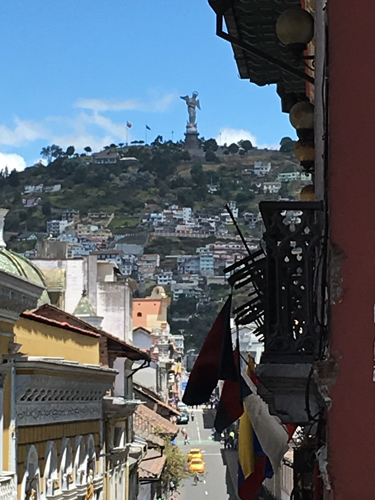
One more taxi ride took us to the Square, with its multitudes, many offers of shoeshines, excellent Gelato, and in general, a relaxing walk about the square and some of the surrounding architectural attractions. In anticipation of a strenuous week of birding beginning at 5:00 a.m. on the morrow, we took an early exit from the city to return to the hotel and a pleasant dinner with some good Chilean wine.
I have previously posted a short blog relating only to some of the Hummingbirds seen and photographed by our guide, Andres Vasquez. For context, here is a summary of our complete itinerary: August 10, Quito to Yanacocha, where we hiked for the morning; then on to our Tandayapa Lodge for the next 3 nights; August 11, birding the upper Tandayapa Valley (7,200-5000 elevation); August 12, birding Mashpi Amagusa area and Milpe; August 13, at the wonderful Paz de Las Aves, for the Cock of the Rock lek and the Pittas, among others, night at Mirador del Rio Blanco; August 14, Mashpi Shungo Reserve, night at Mirador del Rio Blanco; long drive to Guango on the eastern slope, night at Guango Lodge; 15 August, back toward Quito via Papallacta and Antisana; to our hotel near the airport in Puembo, with time, arranged by Andres on the spur of the moment, for a side visit to Puembo Birding Garden nicely hosted by Mercedes.
Andres authorized me to include the following photos taken by him during our tour.
A great look at a low overhead Andean Condor at Antisano:

A Chestnut-crowned Antpitta:

A Flame-faced Tanager:
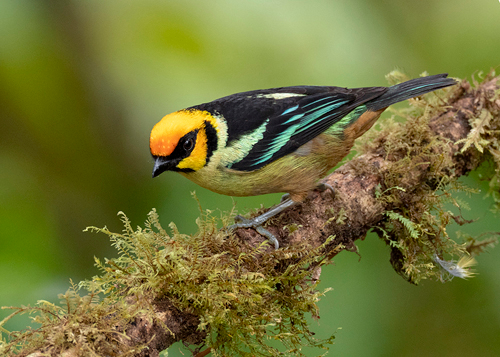
A Lemon-rumped Tanager:
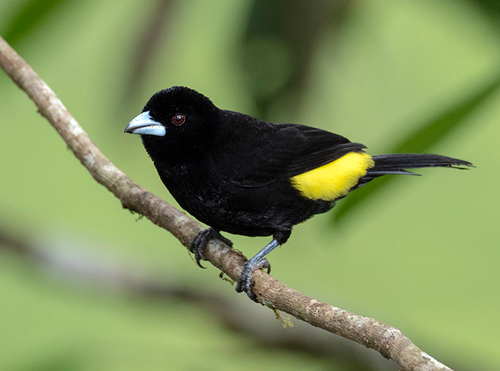
A Many-striped Canastero, at about 14,000 feet on a cold, cloudy, wet and windy day, with a few snow patches along the way-yes, at the Equator:
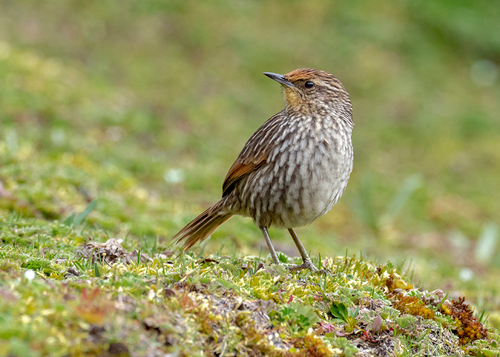
An Orange-breasted Fruiteater:
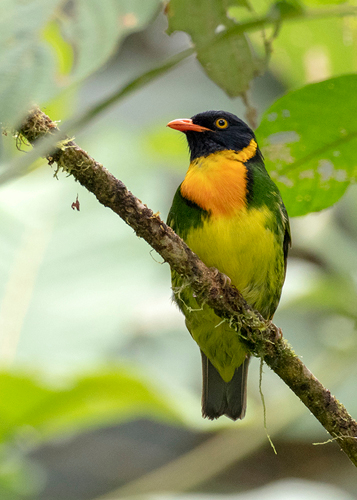
A target bird, new family, Rufous-crowned Gnatpitta:
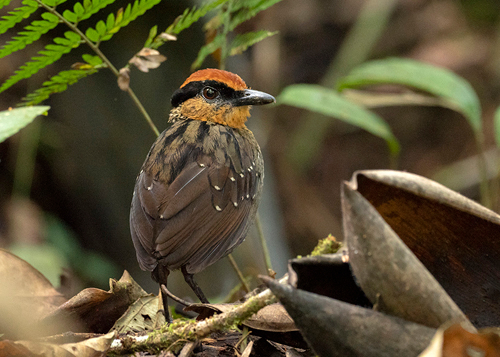
A Scarlet-bellied Mountain Tanager:
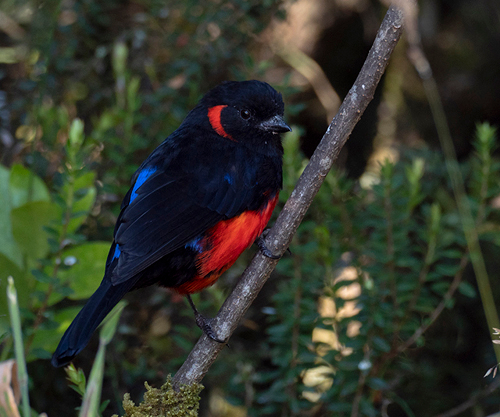
A Tawny Antpitta:
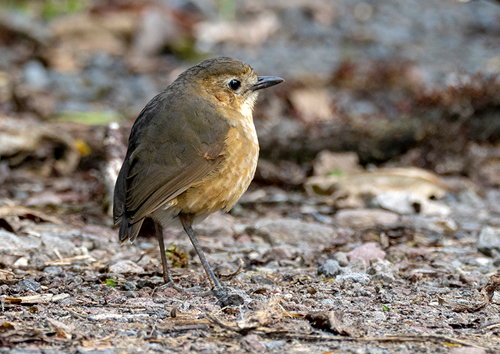
A target bird, new family, Toucan Barbet at Amarosa:
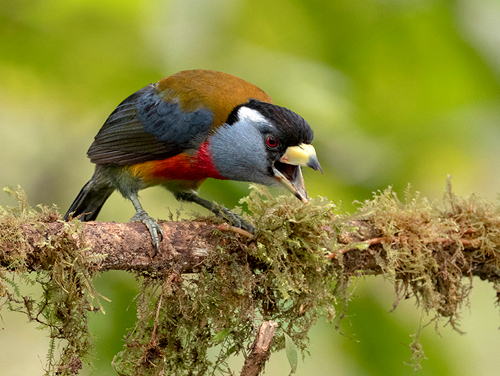
A White-bearded Manakin:
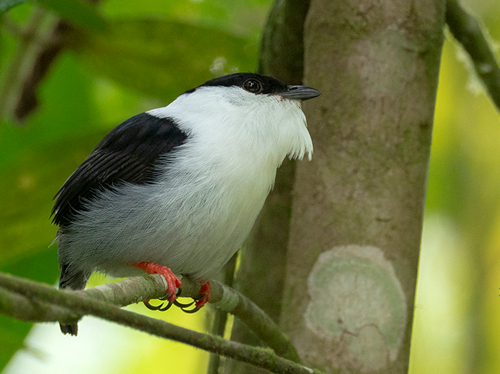
A White-throated Quail-dove at Amarosa:
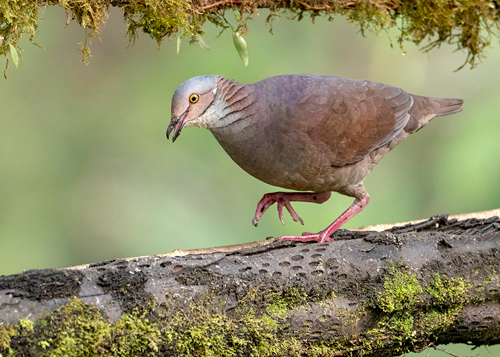
Along the way, Adam and I tried to snap a few pictures on our cell phones, and here are a few of our best efforts, first mine:
Adam at TeleferiQo
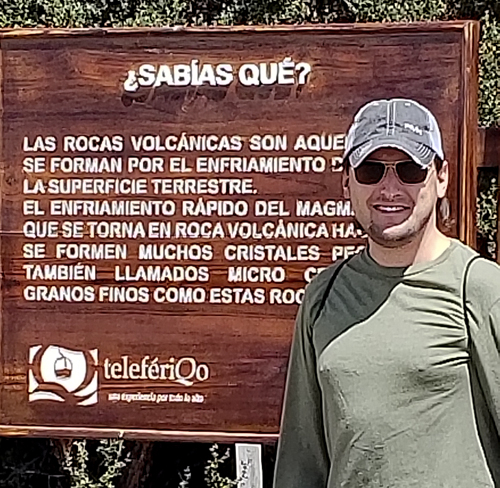
Crimson-rumped Toucanet
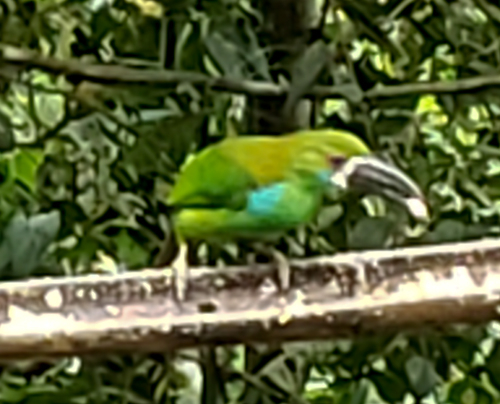
Black-backed Wood Quail
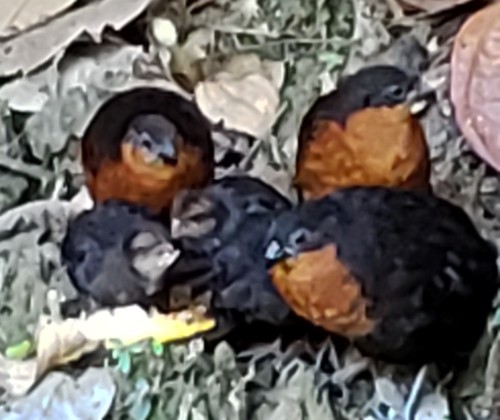
Adam and I at Refugio Paz de las Aves
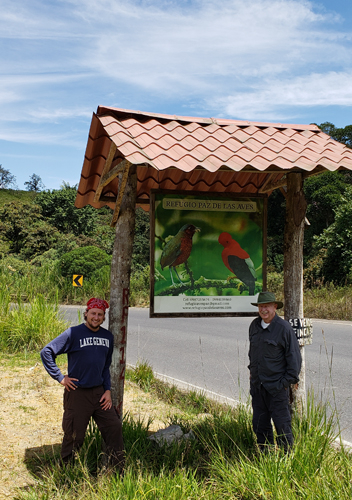
An Agouti
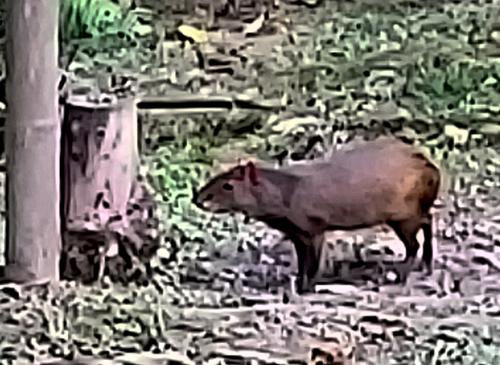
Cocoa tree, with cocoa bean pods (and we sampled the product, chocolate bars).
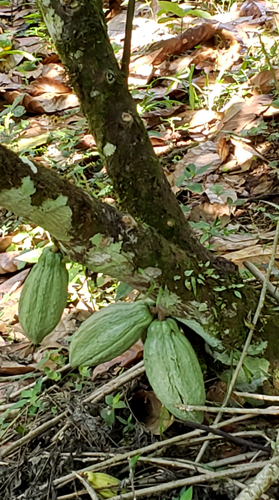
And here are some of Adam’s shots:
The two of us:
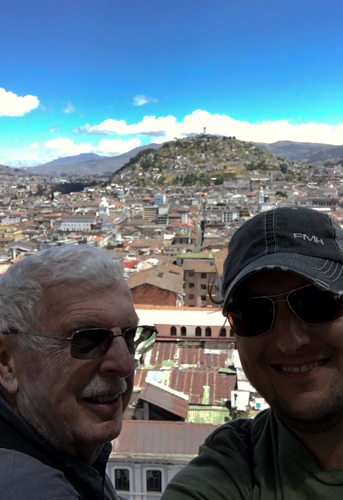
Here is a long view of a Black and Chestnut Eagle, which Adam was the first to spot as we relaxed at a beautiful overlook. Andres was quite excited to find this rarity, and as we soaked in the view of one, a second flew in.

Quail Dove at Amagua:
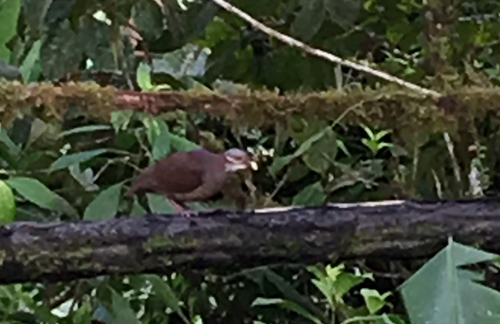
A toucanet:
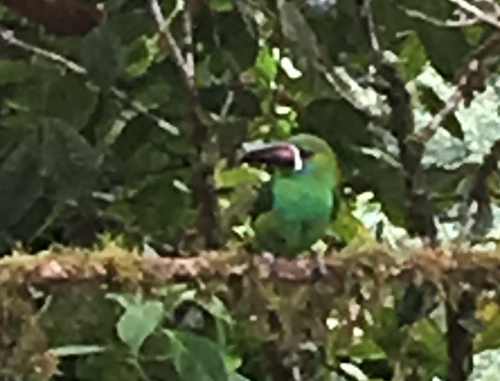
At the Cock of the Rock lek:
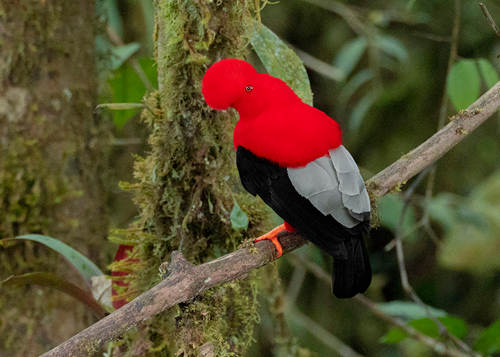
Golden headed Quetzel:
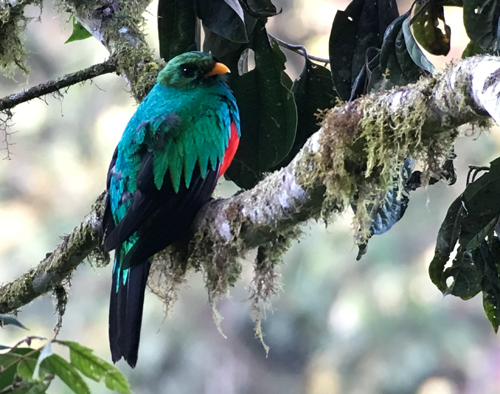
Toucan:
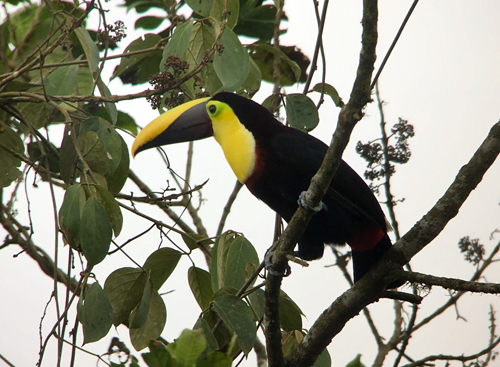
Snow on the mountain at the Equator
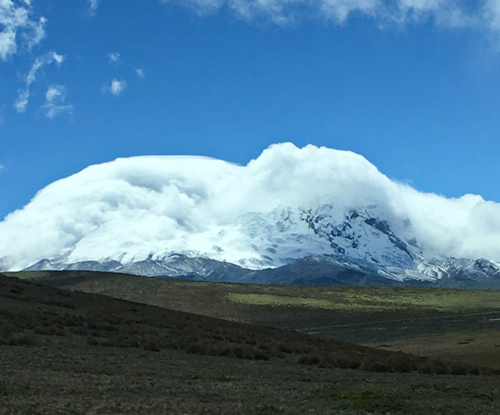
The two birder dudes:
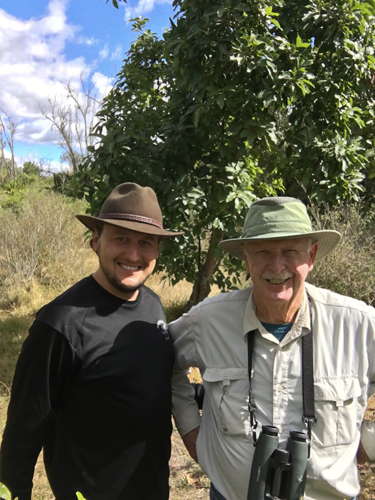
My new families for this trip were the Toucan-Barbet, the Chestnut-crowned Gnatpitta (now in the Gnateater family), and the new split from the big Tanager (Thraupidae) family, the Mitrospingidae family, consisting of just 3 former tanagers. The one I saw was the Dusky-faced Tanager. My fourth Ecuadorean family target, the Sapayoa, will have to await another trip, perhaps to a safer destination. In the meantime, Adam returned home and I went to the Cristalino Jungle Lodge in Brazil, primarily to see another new family for me, a Trumpeter.
